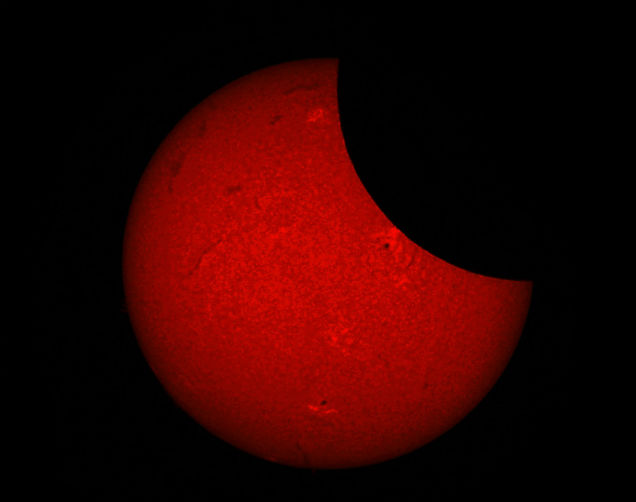

Orion is proud to partner with BBC Sky at Night Magazine, the UK's biggest selling astronomy periodical, to bring you this article as part of an ongoing series to provide valuable content to our customers. Check back each month for exciting articles from renowned amateur astronomers, practical observing tutorials, and much more!
Warning: Do not look directly at the Sun with the naked eye or any unfiltered optical instruments
The ancient Chinese thought solar eclipses were the Sun being eaten by a dragon. Today we know exactly what causes them - and where to get the best views

Annular Solar Eclipse by Ken S.
One of the most breathtaking astronomical events you can witness is a total eclipse of the Sun, also known as a total solar eclipse. Not only is it an experience you'll never forget, but it also shows the Solar System in motion through the fortunate alignment of three astronomical bodies.
The first object is our planet, Earth, which slowly orbits the second object, the Sun. The third object in the equation is the Moon. We get an eclipse when the Sun, Moon and Earth are temporarily aligned.
On Earth we're really rather lucky that the Moon is just the right size and orbits at just the right distance to make total solar eclipses possible. You may wonder how they happen at all since the Sun is so much bigger than the Moon. Well, due to one of the most amazing coincidences in nature, even though the Moon is 400 times smaller than the Sun, the Sun is around 400 times further away. As a result, the two objects can appear to be the same size.
However, we don't get a total solar eclipse every time the Moon moves between Earth and the Sun. The lunar orbit is tilted, so that it sometimes passes above or below the Sun. And because the Moon's orbit isn't circular but elliptical, like an oval, when it is furthest from us and an eclipse occurs the Moon is too small to cover the Sun completely. We then see an 'annular eclipse', in which a thin ring of sunlight can be seen circling the Moon.
Sun Blocked
When we witness a total solar eclipse it means that we are in the shadow of the Moon and, as the Sun is the bigger object, it makes the shadow of the Moon cone-shaped.
This shadow cone starts out as big as the diameter of the Moon at 3,476km (2,160 miles), but by the time it reaches Earth the shadow is much smaller — the biggest it can get is about 300km (190 miles) in diameter. If you're lucky enough to be within the zone of the shadow, you'll see darkness descend as the shadow sweeps across the planet.
During an eclipse the Moon will cover the Sun entirely for seven minutes 31 seconds at most, but you'll probably see a 'totality' lasting somewhere between two and four minutes. If you're not within the 300km circle of the shadow cone, however, you'll only see a partial eclipse because the Moon covers up less of the Sun as you move further away from the track of totality.
Do, however, be careful! Due to the intense light from the Sun, a total eclipse is dangerous to look at. The only time when it's safe to look directly at the eclipse is during the few minutes of totality when the Moon completely covers the Sun. For the rest of the event you must protect your eyes from the Sun's glare. Take appropriate care and you can fully enjoy this marvel of celestial mechanics.
How To See An Eclipse
Three ways to see it ...
Pinhole
A safe way of viewing an eclipse is with two pieces of card. Make a small hole in one and hold the other so that the Sun is projected onto it. You can then watch as events unfold.Eclipse Glasses
You can now buy safe eclipse viewers that you wear just like sunglasses. They cut out all harmful ultraviolet and infrared rays and 99.9 per cent of the Sun's visible light.Casting Shadows
See total coverage of the Sun in the umbra
During a total solar eclipse, if you're in the 'umbra' you'll see the entire Sun being slowly covered by the Moon and get the full glory of totality. There's also an area around the umbra called the 'penumbra', where the shadow isn't quite so dark. On the ground this forms a large circular zone where you see more and more of the Sun the further you get from the umbra until you don't see an eclipse at all. So whenever people in one location see a total eclipse, those in a large surrounding area will see a partial eclipse. There are a maximum of five solar eclipses in any given year.
Copyright © Immediate Media. All rights reserved. No part of this article may be reproduced or transmitted in any form or by any means, electronic or mechanical without permission from the publisher.

















